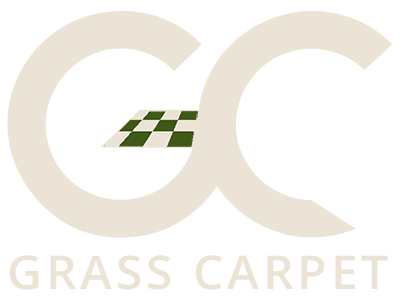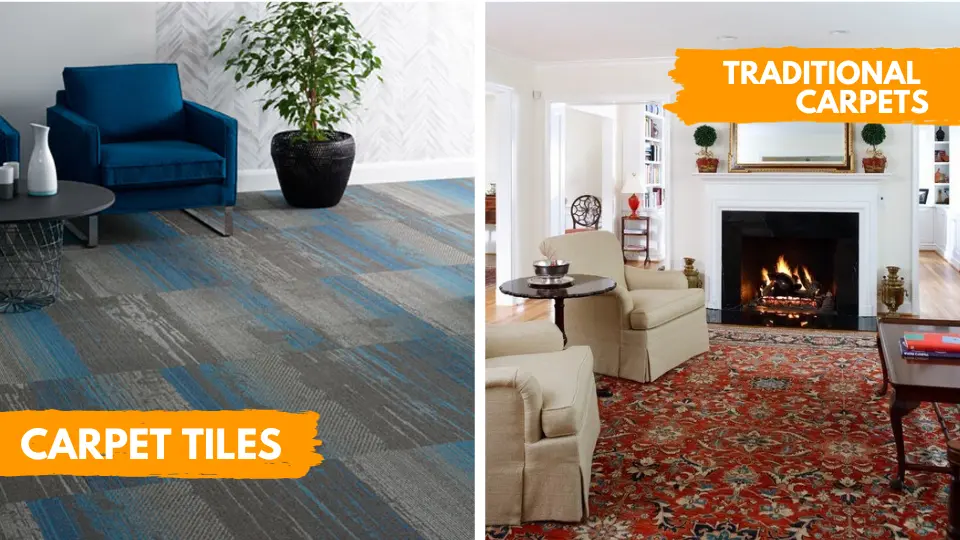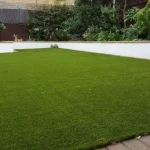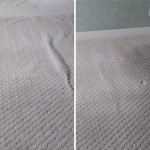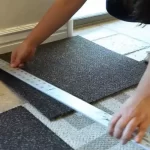Buying a carpet is one of the most guaranteed ways of improving any interior stying, adding significant comfort and visual interest to it. Wall to wall carpets are truly wonderful and versatile floor covering elements that can instantly alter the way a space looks and feels. However, all this functional and aesthetic magic comes from the right understanding and selection.
This is due to the fact that carpets feature a vast number of fiber types (materials) and weaving techniques; two main aspects deciding a carpet’s features, performance, and longevity. So it’s an absolute must to be aware of as many carpet types as possible, along with their pros and cons, so as to make informed and cost-effective choices.
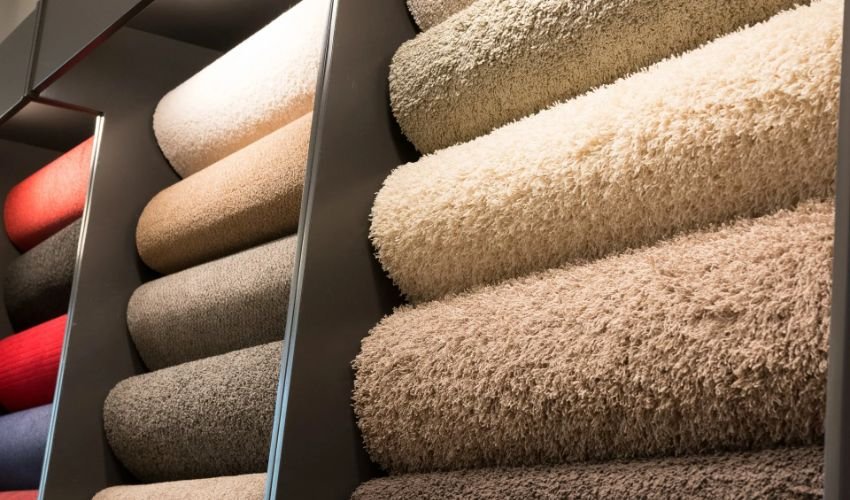
Learning About Carpet Types | Weaving Techniques, Limitations And More
Carpets come in two main styles (construction manner) which are Loop Pile and Cut Pile, with the third version being a combination of the two. Both these types differ regarding various aspects such as durability, level of softness, maintenance requirements, appearance and textures, and aesthetic possibilities. And of course, the areas of applications are different too. For example, carpet tiles offer unique advantages in terms of installation and design flexibility.
Up ahead, we’ll be comprehending both the types along with a detailed analysis of their structure, design availability, positives, and negatives.
Let’s step into it!
Structural Details Of Carpet Types
Have a look at how the two types of modern carpets differ from each other in terms of weaving and how you can identify each.
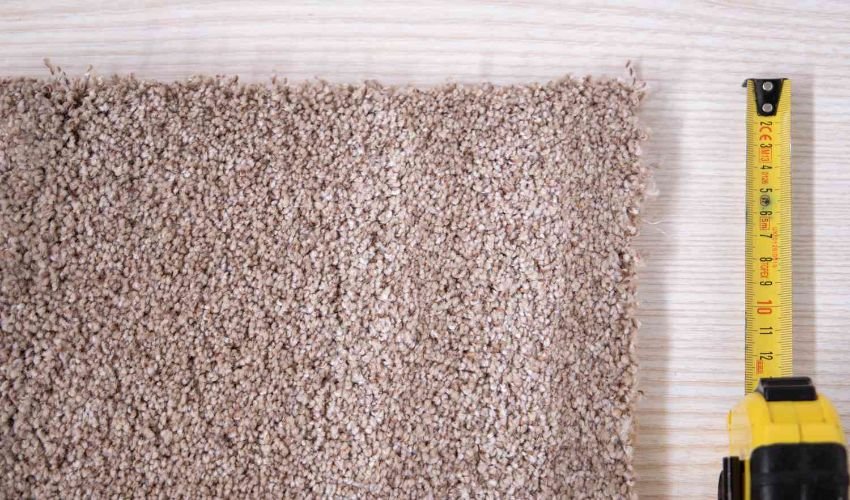
Look And Feel
-
Loop Pile
Loop Pile carpets have a textured appearance and somewhat coarse feel due to the fibers being in an uncut form and creating loops. They appear as a rustic-looking soft flooring.
-
Cut Pile
Cut Pile carpets have a uniform and smooth look and have varying textures such as tightly packed and bouncy ones. They are extremely soft & velvety to touch.
Weaving (Loop Structure)
-
Loop Pile
The loops of loop pile carpets are in their natural state (uncut), looping over and back and creating a rounded appearance.
-
Cut Pile
The loops of cut pile carpets are sheared (cut) at the top, leading to exposure of the ends of the fiber and a twisted look (bouncing back after compression).
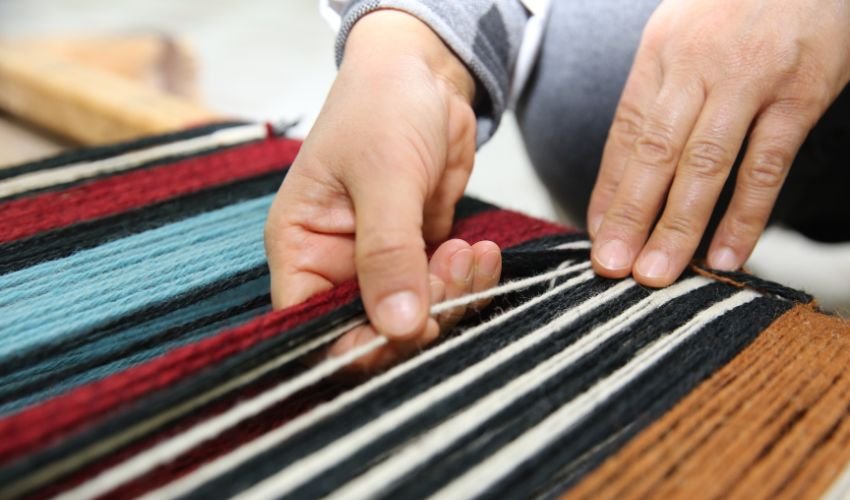
Popular Styles
-
Loop Pile
The popular styles of loop pile carpets are Sisal, Berber, and Level Loop.
-
Cut Pile
The popular styles of cut pile carpets are Plush, Frieze, and Saxony.
Major Pros & Cons Of Carpet Types
With this info, you can easily determine the best carpet type for your residential or commercial use.
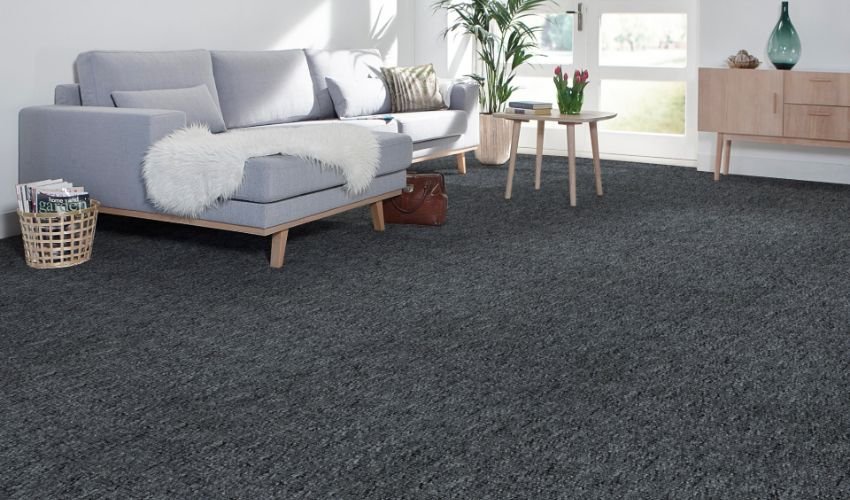
Loop Pile Carpets
Positives
- Extreme Durability: Loop Pile carpets have high longevity and can prove to be a value-for-money choice of floor treatment.
- Easy Maintenance: They are easy to clean and do not require excessive or frequent upkeep.
- Stain Resistance: The tightly packed loops of loop pile carpets prevent deeper penetration of stains and marks
- Heavy-duty Performance: These carpets do not get damaged due to excessive foot traffic, impact or heavy furniture placement
- Kid and Pet Friendly: Loop pile carpets are excellent at hiding stains, foot impression and dirt marks, hence great for homes with children and pets
Drawbacks
- Coarse Texture: Loop pile carpets are likely to seem somewhat uncomfortable to bare feet
- Limited Designs: They come in a lesser variety of colors, designs and textures

Cut Pile Carpets
Positives
- Luxurious Structure: Cut pile carpets have the plushest, softest and most inviting looks and feel extremely comfortable underfoot
- Aesthetic Versatility: These carpets are available in endless design, color, print and pattern options for unique decorations
- Easy Upkeep: These carpets are fairly a breeze to care for and vacuuming them is really convenient
- Noise Reduction: The thick and fluffy structures of these carpets absorb most of the noises, leading to comfortable interiors
- Effective Insulation: These carpets are excellent at trapping heat and keeping interiors warm, hence offering energy-efficiency
Drawbacks
- Average Durability: Cut pile carpets are less long-lasting and susceptible to crushing
- Not Pet-friendly: These carpets can be damaged by claws and nails and can smell nasty by absorbing liquids quickly
Best Areas To Use Both Types
You can relate your intended carpet usage with the info mentioned ahead and make the best selections.
Loop Pile Carpets
Carpets with looped pile structures work wonders in busy areas like staircases, hallways, corridors, walkways, kitchens, entryways, bathrooms, laundry rooms, kids’ rooms, mudrooms, playing areas and home gyms.
Cut Pile Carpets
Carpets with cut pile styles are ideal for areas with lower levels of foot traffic and usage such as bedrooms, living rooms, dining rooms, home offices, guest bedrooms and other areas where a formal and luxurious decor is required.
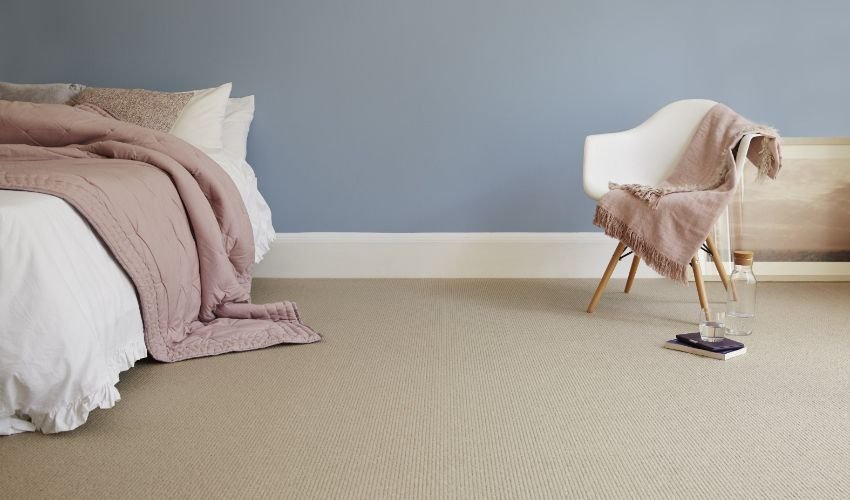
Maintaining Cut Pile And Loop Pile Carpets
It’s equally important to opt for a carpet type whose maintenance and care requirements work for your lifestyle.
Loop Pile Carpets
- Regular Cleaning: Loop pile carpets should be vacuumed on a weekly basis with only the soft brush attachment or the suction-only setting to prevent damage to the loops
- Occasional Addressing: These carpets should be encapsulated (low-moisture carpet cleaning with dedicated chemical solutions) or bonnet cleaned (cleaning using specific absorbent pad machine) once in a while or you can simply go for professional cleaning services.
- Damage Treatments: In case of spills or stains, blot them right away and perform spot cleaning with dedicated cleaners without scrubbing.
- Preventive Measures: Avoid the placement or dragging of heavy furniture atop loop pile carpets.
- General Considerations: Ensure rapid drying of water to prevent mold or mildew growth. Use protective pads on furniture legs and feet.

Cut Pile Carpets
- Regular Cleaning: Cut pile carpets must be vacuum cleaned on an everyday basis using the adjustable beater bar to prevent fiber crushing
- Occasional Addressing: These carpets can be deep cleaned through bonnet cleaning or hot water extraction every 12 to 18 months or you can hire professionals for this purpose
- Damage Treatments: Immediately blot any spills with soft absorbent fabrics and make use of specific stain removers. Never rub a stain and proceed inwards from outer corners when blotting
- Preventive Measures: Never let any furniture remain on top of cut pile carpets for excessively long periods of time. Use door mats to stop the transfer of dirt, dust and abrasive particles
- General Considerations: Do not walk with shoes on top of cut pile carpets and try keeping pets away from the carpeting
In The End
This was our in-depth take on the two types of carpet which you can use as the most helpful buying guide for your next home floor treatment. We talked about Loop Pile and Cut Pile Carpets in detail and discussed all of their major structural and aesthetic aspects along with what makes them a best choice and in what dimensions they can be a great fit. This helpful info will lead you to buying the perfect carpet for your residential and commercial spaces, ensuring a cost-effective investment. So go through it and enjoy your upcoming carpet purchases!
